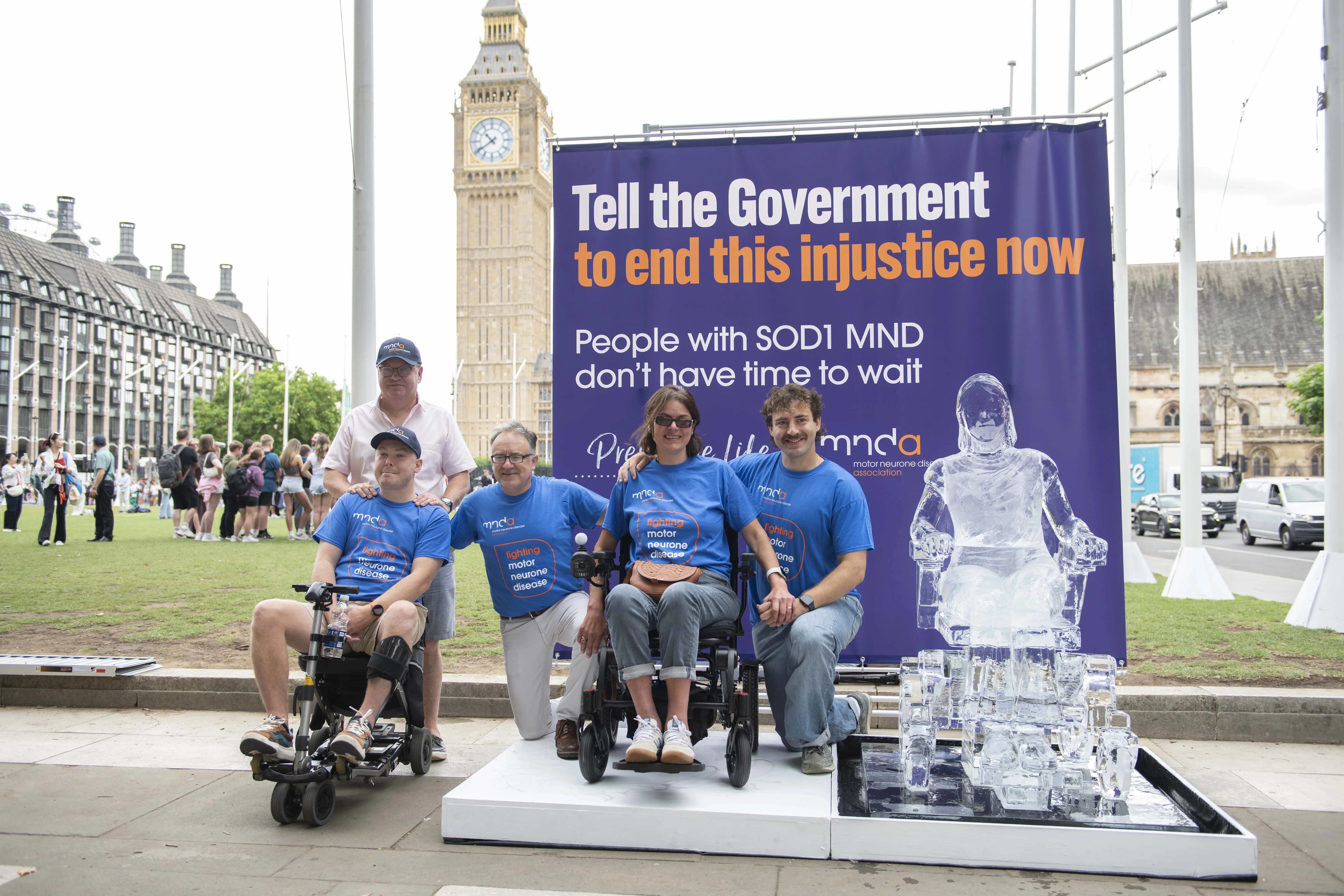24 July 2025 Blog
By Richard Evans, Director of Engagement
A couple of months ago, during a conversation about how to promote our tofersen campaign Prescribe Life, a colleague suggested bringing an ice sculpture of a person with SOD1 MND to Westminster.
I thought it was a great idea. The image of the ice sculpture melting would be the perfect metaphor for the impact of the Government’s inaction on people with SOD1 MND.
For the 2% of people with MND whose disease is caused by a change to their SOD1 gene, tofersen is a lifesaving treatment that can significantly slow or even pause the progression of their symptoms.
While it’s going through the approval process, Biogen, the company behind it, is providing the drug for free, and most people who need it are getting it through the NHS. But there are around 20 people with SOD1 MND who aren’t because the NHS won’t meet the cost of administering it.
Seckin McGuirk is one of those people.
She’s been campaigning alongside us for the Government to intervene, so far without success.
Seckin, and the other people who have been refused access to tofersen, do not have time to wait. Every day the NHS fails to give them the same free medicine it is already giving other people, their disease progresses.
We spoke to Seckin about the idea, and she agreed for us to make the artwork of her, thinking it would help raise awareness of the injustice she’s facing. So last week, we created an ice sculpture of her and put it across the road from Parliament.
Yet as I arrived in Westminster and saw it for the first time, I began to have my doubts. Not that we were doing the right thing in raising the issue, but just how confronting it must be, seeing a sculpture of yourself melting in the sun.
We surrounded Seckin with support and prepared her for what she was about to see. But it was clear that being there with the sculpture was incredibly emotional.
Seckin told me that she was pleased the MND Association was taking such strong action, but her overriding message was how much she wished it wasn’t needed.
From a day full of emotion, these are the words that have stayed with me the most.
Because Seckin is so right.
Why should people like Seckin have to spend their precious time doing emotionally difficult things like seeing an ice sculpture of themselves and doing media interviews?
It’s so obviously unfair that a lifesaving drug is being given to some people but denied to others. It shouldn’t take installations and news coverage before the Government realises and acts on it.
In its response to the BBC article about the ice sculpture, the Department and Health and Social Care said its thoughts were with all those living with the condition.
But the Government’s thoughts won’t give Seckin and the others in her position, including Ellis Millard who attended the day, the chance to slow their disease progression. They need action.
But so far, action has been in short supply.
Following the ice sculpture, we made the short journey from Parliament to the Department of Health and Social Care, where Seckin and Ellis Millard (who also has SOD1 MND and can’t access tofersen) handed in a petition signed by 21,859 people calling on the Government to intervene.
Despite us letting them know in advance and asking a minister to make time to meet with them, no one from the Department of Health and Social Care was available.
This was disappointing. Our offer to arrange a meeting with people affected remains open, and we hope the Government will make the time to talk to them directly.
Like Seckin, we wish we had a health system where obvious injustices like this could be fixed without doing this kind of emotionally charged campaigning to raise their profile.
But sadly, we don’t. And so we’ll keep on going, working with people affected by MND to continue to demand equitable access to tofersen.
We’ll keep you posted on next steps for the campaign.
Richard Evans, Director of Engagement


